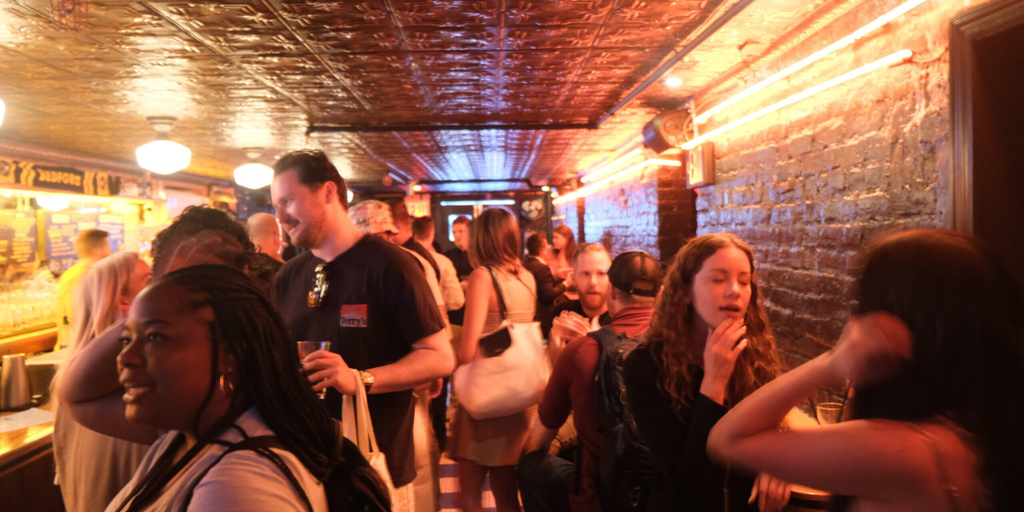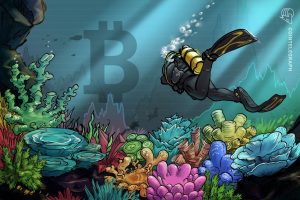
On Tuesday, a financial reporter friend texted me to ask if I’d be attending NFT NYC events the next day. “How is it even happening this year when the volume is so low,” she asked. I sent her a spreadsheet that listed 180 different events happening in the next three days all around the city—there was plenty to do.
By Wednesday afternoon, I was standing outside Samsung’s Future+ launch event doing an interview with a radio reporter who asked me whether this year’s event felt like a shell of what it once was, since, after all, NFTs are down bad.
Hey, I get it. After the speculative JPEG-flipping bubble of 2021 popped and overall NFT sales volume plummeted, the mocking stories write themselves. It’s easy to view today’s NFT space as a punchline, especially if you focus on a single brutal data point comparing volume at the peak to volume now. (NFT sales surged to $2 billion in February, by the way, and dipped only slightly below $2 billion in March.)
But if you ask me if the scene is dead, the answer is an emphatic no. NFT NYC events I attended this year had the energy, positivity, and idea-sharing I’ve come to expect from crypto cultural gatherings over the past few years. Six weeks after an NFT Paris that blew me away, NFT NYC reinforced that Web3 and NFT culture is alive and well, bear market or not. Here are just a few moments I saw that should excite Web3 builders, and might even pique the curiosity of skeptics.
1. 9dcc Treasure Hunt: NFT collector and influencer Gmoney and his Web3 luxury brand 9dcc set up an NFT scavenger hunt with stops across the city. Participants had to hit at least seven different locations from a larger list over the course of three days, checking in at each one by scanning their phones to earn a POAP (proof-of-attendance protocol) NFT showing they were there; prizes included a rare Chromie Squiggle NFT. At every party I attended I saw people wearing the 9dcc ballcap they received at the hunt’s first stop, and raving about the creativity of the experience. This is one of many use cases we’re seeing for NFTs that are unique, social, marketable, and make actual use of the technology.
2. Jeremy Booth’s NFC-chipped Wrangler jacket: The commercial artist Jeremy Booth, a former illustrator at Coinbase, has had a glow-up in the NFT art space thanks to his crisp Western-themed artwork showcased in collections like “Boots” and “Dirt.” In time for NFT NYC, he partnered with Wrangler on a custom “Western Art Dept” black denim jacket, adorned with his own cowboy art and embedded with an NFC (near-field communication) chip that allowed anyone Jeremy met during the week to scan his sleeve and earn a Concrete Cowboys “proof of friendship” POAP with his art on it. Again: the type of thing NFT skeptics could dismiss as a gimmick, but to me it combines original art, fashion, and an IRL experience, all in a way that brought more attention and fans to a deserving digital artist.
3. Bitcoin NFTs get toasted at a Bitcoin-themed bar: It wasn’t so long ago that NFTs were strictly “an Ethereum thing,” and so-called Bitcoin maximalists wanted nothing to do with NFTs. That has changed with the soaring popularity of Ordinal Inscriptions, digital items built on the Bitcoin blockchain, made possible by Bitcoin’s Taproot upgrade last fall. At this happy hour hosted by Trust Machines at PubKey, a Bitcoin-themed bar in Manhattan that opened last year (Bloomberg torched it for not accepting Bitcoin as payment; it does now), let’s just say I ran into a lot of familiar faces who are highly influential on Crypto Twitter and who, one year ago, were certainly not talking publicly about NFTs. Now Bitcoiners are buzzing about Taproot Wizards, Bitcoin Apes, and Ordinals on Magic Eden.
4. Web3 sci-fi TV series scores big names: Veteran TV actor David Bianchi was in town to promote his forthcoming dystopian sci-fi series “RZR,” which announced this week that it has added Mena Suvari and Danny Trejo to the cast in special guest star roles. I ran into David outside SoHo House and he showed me a clip from the show, which is in post-production; it looked very slick. The eight-episode series is truly a Web3-native effort: a live-action series produced by a Web3 company for Web3 release. It will premiere in July on the new streaming platform from Gala Film, a division of Web3 gaming company Gala Games; show creator Bianchi’s production company sold NFTs to spur engagement (holders will get access to bonus content); and the plot involves crypto. Bianchi is already in conversations with multiple large streaming platforms about a possible wider release after the series launches on Gala.
These are just a few memorable moments, but they’re reflective of what excites me in Web3 right now: unique use cases of the technology in art, fashion, and entertainment, and in ways that reward artists and creators.
Yat Siu, the Animoca Brands chairman who is making a billion-dollar-bet on the metaverse, put it well when we chatted at NFT Paris in February. “We think the future of crypto, and Web3 generally, is all culture,” he said. “We think of culture maybe an artist or musician, but actually, if it wasn’t for that artist, or musician, you wouldn’t have Netflix, you wouldn’t HBO, you wouldn’t have Sony PlayStation, you wouldn’t have a TV, you wouldn’t have radio, you wouldn’t have everything that you enjoy right now. Culture is the biggest soft power and perhaps the biggest driver of economic growth.”
Even Arthur Hayes, the BitMEX founder who spends his day trading crypto and tweeting about price action, is pumped about the culture. His Twitter PFP is currently a Taproot Wizard NFT. “In my view, NFTs is a data construct, and it’s a data construct that allows us to trade human culture,” he told us in an interview for the gm podcast coming out this week. “Everything we do other than eating and sleeping is culture, right? It’s sports. It’s going to a nice restaurant. It’s looking at art. It’s listening to music. NFTs is: How do I make this scarce? How do I make this tradable? How do I give money back to the creators? And this is probably, I think, one of the biggest applications of this cryptographic money technology that we’re building, it’s unlocking the potential of the long tail of human culture and letting everybody participate.”
It’s hard not to feel energized by that take.












